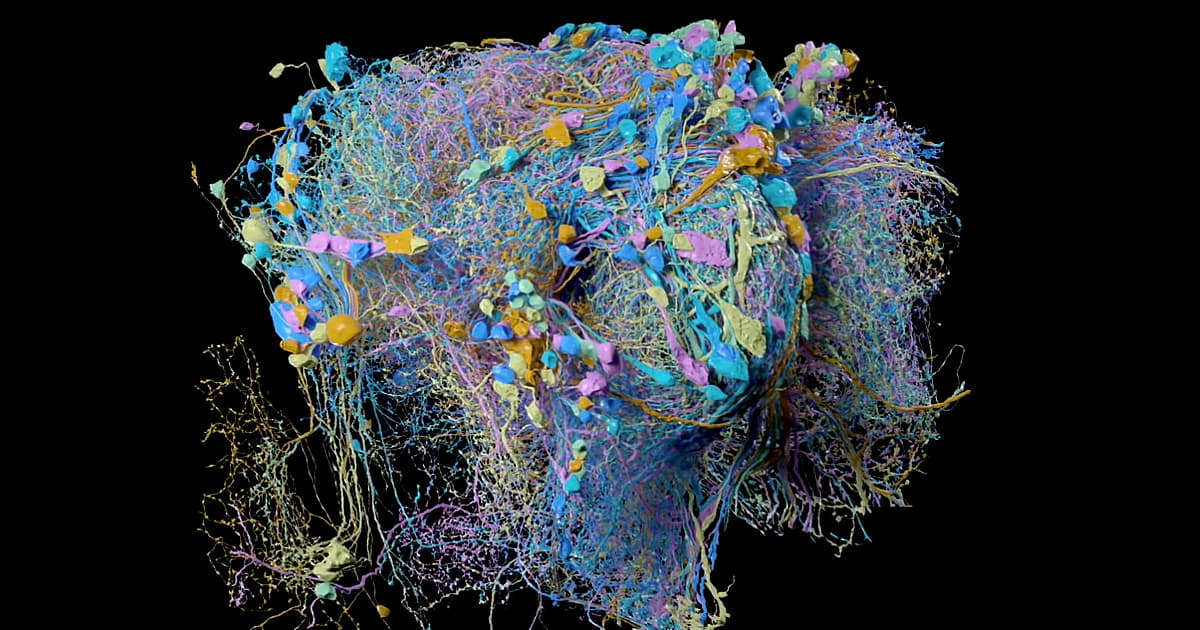Scientists at Google and the Janelia Research Campus in Virginia just published an incredibly-detailed 3D connectome — a map of neural connections — for a fruit fly, including a mind-boggling 20 million synapses connecting 25,000 neurons.
According to the researchers, it's the largest synaptic-level connectome ever to be reconstructed. Scientists are already using the groundbreaking map to study fly behaviors, according to a release.
To create the incredible connectome, the scientists had to slice the tiny fly brain into slabs just 20 microns thick. Then they stitched together images of each slab to construct a 3D map.
The regions of the brain included in the connectome control functions like learning, memory, smell, and navigation. They chose the fruit fly since its brain is relatively simple, but still displays complex behaviors, The Verge reports.
It was an incredible undertaking. Janelia executive director Gerry Rubin said in a statement that tracing connections between every fly neuron by hand would take 250 people two years of work. But thanks to advances in imaging technology and deep learning, the small team of data analysts sped up the process by orders of magnitude.
The team has decided to make all of the tools they used to reconstruct the connectome available for free. A paper describing the effort was uploaded the preprint server bioRxiv on Tuesday.
Share This Article

READ MORE: Google publishes largest ever high-resolution map of brain connectivity [The Verge]

More on connectomes: Supercomputing Is Allowing Us to Map Brain Function at the Deepest Levels
